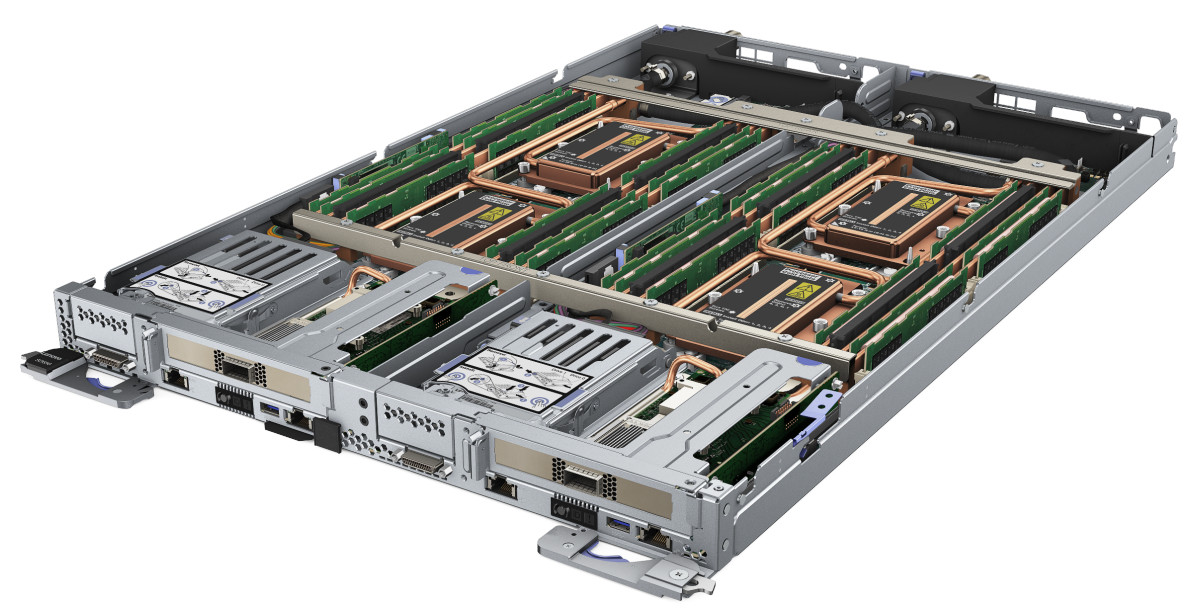Austria’s largest supercomputer, Vienna Scientific Cluster 4 (VSC-4), has hit the ground running. Delivering 2.7 Linpack petaflops, the new Lenovo-built cluster takes Austria across the petascale threshold, providing a nearly five-fold boost over the last major cluster deployment.
VSC-4 was installed at the Vienna University of Technology (TU Wien) last December by Vienna-based company EDV-Design, and began early operations on June 18. It entered the June 2019 Top500 list at number 82. The computational capacity provided by the system’s 790 Lenovo ThinkSystem SD650 nodes will support a broad range of research areas, including astrophysics, biosciences, quantum materials development and transportation planning.

Each warm water-cooled VSC-4 node is equipped with two Xeon Platinum 8174 (Skylake) 24-core processors, a total of 37,929 processor cores altogether. Connected by Intel’s 100 Gbps OmniPath fabric, there are 700 standard nodes providing main memory of 96 gigabytes, 78 fat nodes with 384 gigabytes of main memory, and 12 very fat nodes with 768 gigabytes. Each node is also equipped with an SSD device of 480 gigabytes, available during runtime as temporary storage.
The VSC-4 supercomputer is the follow-on to the ClusterVision-built, oil-cooled VSC-3 system, benchmarked at 596 teraflops. Installed at TU Wien in Vienna in 2014, VSC-3 consists of 2,020 nodes, each housing two Intel Xeon E5-2650v2 8-core CPUs, connected with Intel QDR-80 dual-link high-speed InfiniBand fabric.

The VSC-3 cluster uses immersion cooling from Green Revolution Cooling, its nodes submerged in mineral oil. VSC-3 is expected to remain in operation until 2021.
The new cluster from Lenovo marks a transition back to warm water cooling technology. It’s the same cooling solution used by the SuperMUC-NG supercomputer at Leibniz Supercomputing Center (LRZ) in Garching, Germany.
VSC-4 is a joint project of five Austrian universities: TU Wien, the University of Vienna, the University of Natural Resources and Life Sciences, Vienna (BOKU), TU Graz and the University of Innsbruck. The project was supported financially by the Federal Ministry of Education, Science and Research.
“The strategy developed by the VSC partner universities, of jointly operating an internationally competitive supercomputer, has really paid off in recent years,” said Prof. Regina Hitzenberger, Vice Rector for Infrastructure at the University of Vienna, and Prof. Johannes Fröhlich, Vice Rector for Research and Innovation at TU Wien, representing the VSC owners. “The support from the Ministry of Science has meant that together we can provide our research groups with first-class infrastructure in the field of high-performance computing. It would not have been possible for any of the universities to achieve something of this calibre by themselves.”
According to the VSC Research Center, each node of the new cluster reaches about 250 points in the SPECrate2017 Floating Point benchmark, about a five-fold increase over its predecessor’s nodes. By the Linpack metric, a single VSC-4 node delivers about 3 teraflops, a 10X gain on VSC-3 nodes, which come in at just under 300 gigaflops.
Final acceptance is the next step.
“[VSC-4] is now functional in principle, but with large-scale computers such as these it always takes a bit of time for the acceptance process to be completed and for the computer to be able to enter into normal operation,” says Prof. Herbert Störi, the head of the VSC Research Center. “The acceptance process is progressing extremely well. We are quite confident that VSC-4 will be available for use for scientific calculations from autumn as planned.”
Austria is a EuroHPC member country. At the time Austria announced its intention to join the effort, the Austrian Minister of Education, Science and Research Heinz Faßmann underscored the importance of Austria resources and shared European systems, stating: “High-performance computing is a key resource for Austria. We are fully aware that in many areas of research, progress depends on the availability of high performance computing and data infrastructure. For Austria it is thus important to have access to these cutting-edge research resources in addition to our continuing national efforts.”





























































